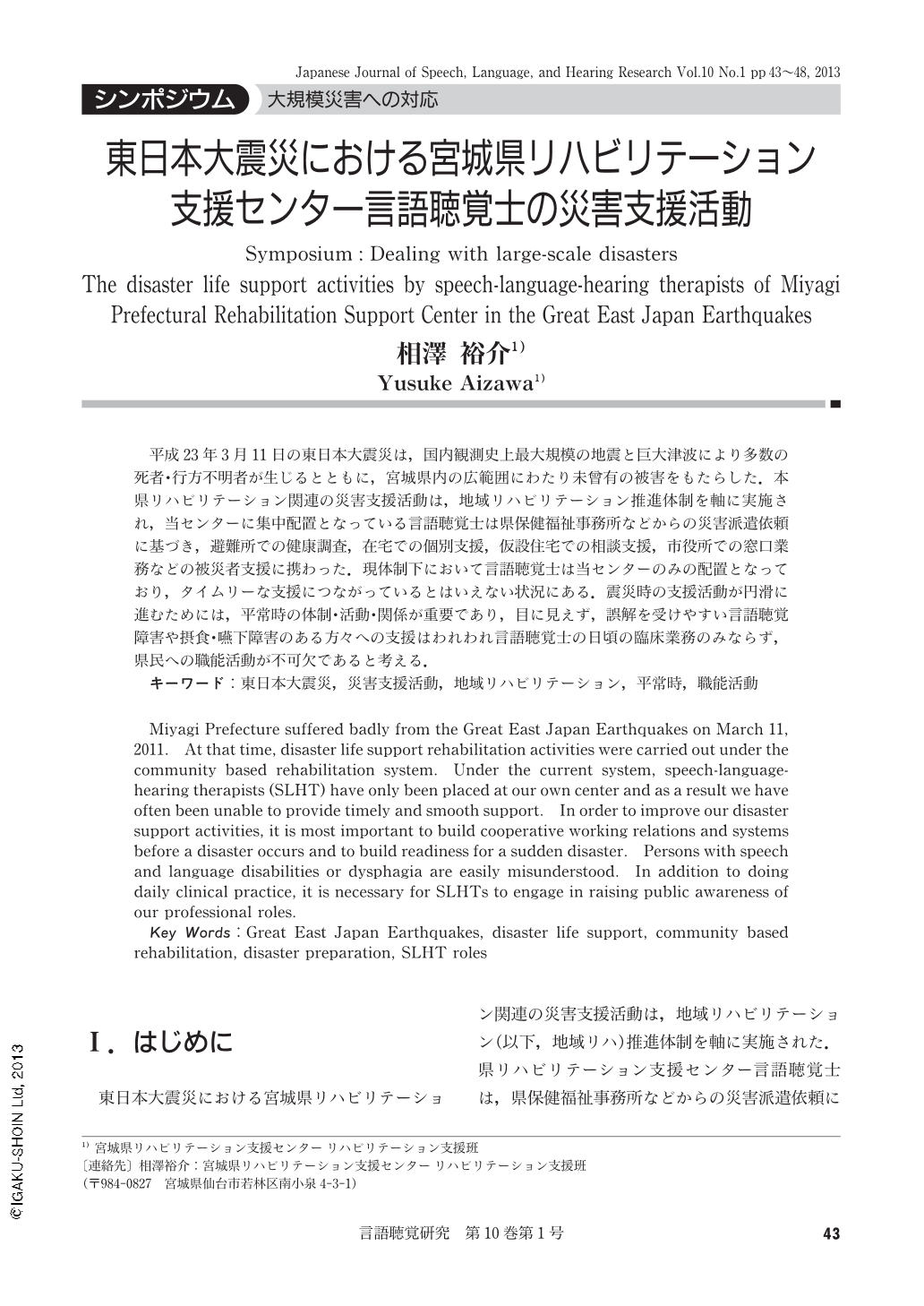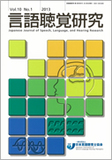Japanese
English
- 有料閲覧
- Abstract 文献概要
- 1ページ目 Look Inside
- サイト内被引用 Cited by
平成23年3月11日の東日本大震災は,国内観測史上最大規模の地震と巨大津波により多数の死者・行方不明者が生じるとともに,宮城県内の広範囲にわたり未曾有の被害をもたらした.本県リハビリテーション関連の災害支援活動は,地域リハビリテーション推進体制を軸に実施され,当センターに集中配置となっている言語聴覚士は県保健福祉事務所などからの災害派遣依頼に基づき,避難所での健康調査,在宅での個別支援,仮設住宅での相談支援,市役所での窓口業務などの被災者支援に携わった.現体制下において言語聴覚士は当センターのみの配置となっており,タイムリーな支援につながっているとはいえない状況にある.震災時の支援活動が円滑に進むためには,平常時の体制・活動・関係が重要であり,目に見えず,誤解を受けやすい言語聴覚障害や摂食・嚥下障害のある方々への支援はわれわれ言語聴覚士の日頃の臨床業務のみならず,県民への職能活動が不可欠であると考える.
Miyagi Prefecture suffered badly from the Great East Japan Earthquakes on March 11, 2011. At that time, disaster life support rehabilitation activities were carried out under the community based rehabilitation system. Under the current system, speech-language-hearing therapists (SLHT) have only been placed at our own center and as a result we have often been unable to provide timely and smooth support. In order to improve our disaster support activities, it is most important to build cooperative working relations and systems before a disaster occurs and to build readiness for a sudden disaster. Persons with speech and language disabilities or dysphagia are easily misunderstood. In addition to doing daily clinical practice, it is necessary for SLHTs to engage in raising public awareness of our professional roles.

Copyright © 2013, Japanese Association of Speech-Language-Hearing Therapists. All rights reserved.


